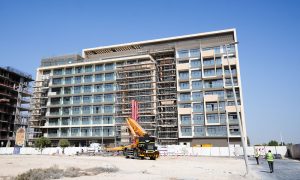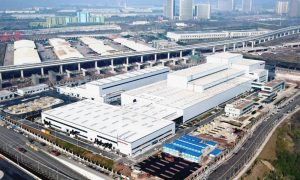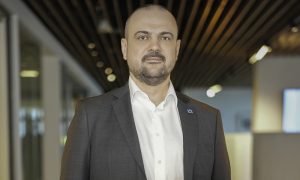Reducing GHG emissions requires a coordinated approach says KEO’s Ioannis Spanos
Organisations must fully understand within which operations and supply chains GHG emissions are, so they can be addressed

“The reduction of emissions required to achieve the 1.5-degrees Celsius target needs to, and must, include a coordinated approach from all parties that are associated with the construction industry,” explained Dr. Ioannis Spanos, Director Sustainability & Environmental Services. Dr. Spanos made the comment to Middle East Construction News (MECN) in response to an announcement by the World Meteorological Organisation (WMO), which said there is a 50:50 chance of the annual average global temperature temporarily reaching 1.5C above pre-industrial levels for at least one of the next five years.
The MWO’s announcement is significant as the Paris Agreement, which was adopted by 196 Parties at COP 21 in Paris, on 12 December 2015 and entered into force on 4 November 2016, set out to limit global warming to well below 2C, preferably to 1.5C, compared to pre-industrial levels.
Commenting on the construction industry’s output of GHG emissions, Dr. Spanos noted, “Depending on the region and the specific country, the built environment is responsible for circa 40% of the emissions, when the full cycle of operations, construction, and the full supply chain is considered.”
He also pointed out that efforts to combat GHG emissions are well underway: “Significant efforts have been undertaken and further actions will continue the elimination of emissions. The UAE, in real terms, is reducing its emissions, and globally the renewable energy contribution is increasing year by year.”

When MECN asked Dr. Spanos about why GHG emissions continue to rise despite their being a concerted effort to cut them, he responded, “To move to zero carbon within the next 30-years is a greater challenge that includes coordinated actions beyond national borders. Globally, the emissions are increasing as the population is increasing, developing counties need more energy and at the same time the introduction of alternative, green fuels, is still relatively slow, while the total energy demand increases. Global issues require global commitments, and it is a great pleasure to see the UAE and KSA making decarbonisation commitments.”
Discussing some of the biggest challenges the built environment faces in terms of tackling GHG emissions, he cautioned, “For new buildings, the question is how far and how fast the new developments need to be near-zero-emissions. The existing building stock, during the next 30-years, will still produce the same emissions under a business-as-usual scenario, unless there is a big driver and push for remodeling and energy reduction strategies that will focus on the deep, and long-term, solutions.”
Pressed about what quick fixes the industry can put in place to cut GHG emissions in the near term, he counters, “Start measuring; collect data; and analyse data. GHG reduction and decarbonisation are partially accounting issues; if an organisation doesn’t fully understand within which operations and supply chains the GHG emissions are, then it is difficult to focus on quick fixes. There is industry consent, however, that quick fixes may not solve the problem; a basket of appropriate solutions can provide better added-value benefits.”
Read more about the region’s journey to Net Zero development with insights from four regional experts here. Sustainable development will also be discussed at the forthcoming Future of Architecture Summit on 7 June, and at the Energy & Sustainability Summit on 21 June. Both events will take place in Dubai and are free to attend.




















